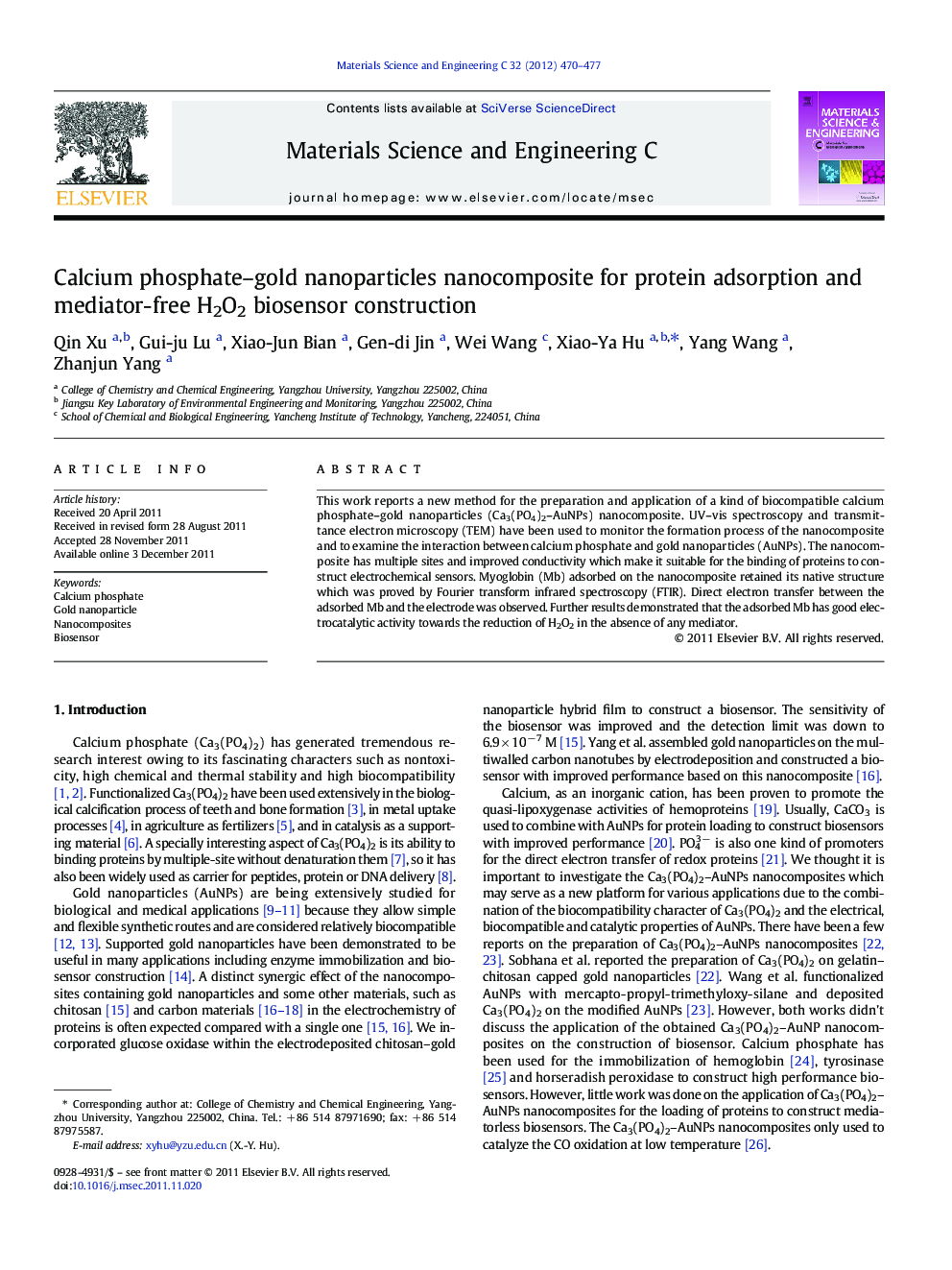| Article ID | Journal | Published Year | Pages | File Type |
|---|---|---|---|---|
| 1429125 | Materials Science and Engineering: C | 2012 | 8 Pages |
This work reports a new method for the preparation and application of a kind of biocompatible calcium phosphate–gold nanoparticles (Ca3(PO4)2–AuNPs) nanocomposite. UV–vis spectroscopy and transmittance electron microscopy (TEM) have been used to monitor the formation process of the nanocomposite and to examine the interaction between calcium phosphate and gold nanoparticles (AuNPs). The nanocomposite has multiple sites and improved conductivity which make it suitable for the binding of proteins to construct electrochemical sensors. Myoglobin (Mb) adsorbed on the nanocomposite retained its native structure which was proved by Fourier transform infrared spectroscopy (FTIR). Direct electron transfer between the adsorbed Mb and the electrode was observed. Further results demonstrated that the adsorbed Mb has good electrocatalytic activity towards the reduction of H2O2 in the absence of any mediator.
Graphical abstractFigure optionsDownload full-size imageDownload as PowerPoint slideHighlights► Using gelatin modified gold nanoparticles to prepare needle-like calcium phosphate. ► Calcium phosphate provides multiple sites for protein adsorption. ► Gold nanoparticles act as electron tunneling. ► Myoglobin adsorbed on the material showed direct electrochemistry and good catalysis.
